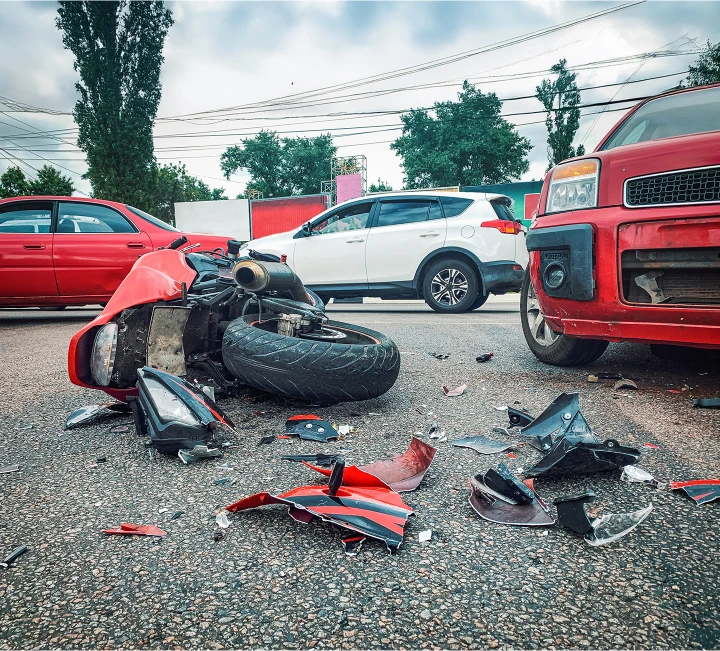Why Chain-Reaction Crashes Are Complicated, and When to Call a Lawyer
You Hit Someone. Someone Hit You. Now Everyone’s Pointing Fingers.
You’re driving on I-85 near Charlotte on a rainy morning. Traffic is moving fast, until it isn’t. You slam the brakes. The car behind you doesn’t stop in time. Another car crashes into them. And suddenly, you’re one of several vehicles involved in a highway pileup.
If you’re wondering, “Who’s at fault here?”, you’re not alone. Chain-reaction crashes are confusing, stressful, and often involve multiple stories about what happened. The truth is, liability in these situations is rarely clear-cut, especially under North Carolina law.
Why Multi-Car Accidents Are So Legally Complicated
When more than two vehicles are involved in a crash, several things can muddy the waters:
- Who caused the initial impact?
- Were other drivers speeding, tailgating, or distracted?
- Did weather or road conditions play a role?
- Were there multiple, overlapping mistakes made by different people?
- What does the accident report say that the police officer completed?
In many cases, more than one driver may share responsibility, which leads to disputes between insurance companies. And because everyone sees the crash from their own perspective, even eyewitness accounts can conflict.
North Carolina’s Contributory Negligence Rule Makes It Tougher
North Carolina is one of just a few states that still uses the contributory negligence rule. Here’s what that means for you:
- If you’re found to be even 1% at fault, you may be barred from receiving any compensation.
So even if someone else started the chain reaction, if an insurer or court decides you played a small part — by following too closely, reacting too late, or braking suddenly — you could lose the ability to recover damages. That’s why multi-car cases often become legal chess matches, and early legal advice is critical.
What Insurance Companies Look For (And Why You Should Be Careful)
After a multi-car pileup, insurance companies immediately begin gathering information to limit their liability. Their goal isn’t to help you — it’s to protect their bottom line.
Here’s what they typically scrutinize:
- Police reports and citations: Insurers look closely at who was cited and what officers documented about the scene. If you were ticketed or even mentioned as contributing to the accident, they may use that to reduce or deny your claim.
- Statements from drivers and witnesses: What you say after a crash can be used against you. A simple comment like “I didn’t see the car in front of me stop” may be interpreted as an admission of fault.
- Vehicle damage patterns: The location and extent of damage to each vehicle helps insurers reconstruct the chain of events. If your vehicle rear-ended another car, they may assume fault — even if the pileup started ahead of you.
- Timing and impact sequence: Insurance adjusters often try to pinpoint which driver caused the initial collision and which ones were secondary or unavoidable. This can affect whose insurer pays, how much, and whether claims are disputed.
- Injury timing and documentation: Delays in medical treatment or inconsistent reports can cause insurers to downplay the severity of your injuries or argue they weren’t caused by the crash.
Why This Matters
In multi-car collisions, liability can be shared or disputed across multiple drivers — and the more parties involved, the more likely insurers will try to shift blame. Even if you weren’t at fault, being unprepared or uninformed can cost you, in denied claims, reduced payouts, or even being wrongly accused of causing the crash.
Bottom line: Talk to a lawyer before giving a recorded statement, signing anything, or assuming you know how fault will be determined. In pileups, things aren’t always what they seem.
When to Call a Lawyer After a Multi-Car Crash
You don’t need a lawyer for every fender bender. But when multiple vehicles are involved — and especially when injuries or conflicting accounts come into play — having a legal advocate becomes critical.
You should reach out to a lawyer if:
- You’ve suffered serious injuries or missed work
- A fatality occurred, or there’s an open investigation
- You're unsure how to navigate multiple insurance claims
At Shankle Law Firm, we help clients by:
- Gathering and analyzing crash evidence
- Protecting your side of the story
- Dealing with complex insurance negotiations
- Helping you avoid missteps that could cost you compensation
Why Fault in a Pileup Can Be So Unclear
Sometimes, it’s obvious who caused a crash. Other times, it’s a chain of bad luck, bad decisions, and bad weather.
Imagine this:
- Car A stops suddenly in heavy fog
- Car B rear-ends A
- Car C rear-ends B
- Car D swerves and sideswipes another vehicle while trying to avoid the pileup
Who’s liable? It depends on what each driver was doing in the moments leading up to the crash, and often, only a careful legal investigation can sort it out.
Still Confused? You Don’t Have to Untangle This Alone
Multi-car crashes are messy — legally, emotionally, and financially. If you’re feeling confused or overwhelmed, that’s normal. You shouldn’t have to guess your way through North Carolina’s strict liability rules, especially when the stakes are high.
If you were involved in a pileup, especially on one of Charlotte’s busy highways like I-85, I-485, or I-77, don’t wait to get help.
Call Shankle Law Firm for a free consultation. We’ll help you protect your rights while the facts get sorted out.
*Please Note - The content on this website is for informational purposes only and does not constitute legal advice. Viewing this site, using information from it, or communicating with Shankle Law Firm, PA through this site does not create an attorney-client relationship. For legal advice tailored to your situation, please contact us directly at (704) 370-1212.

